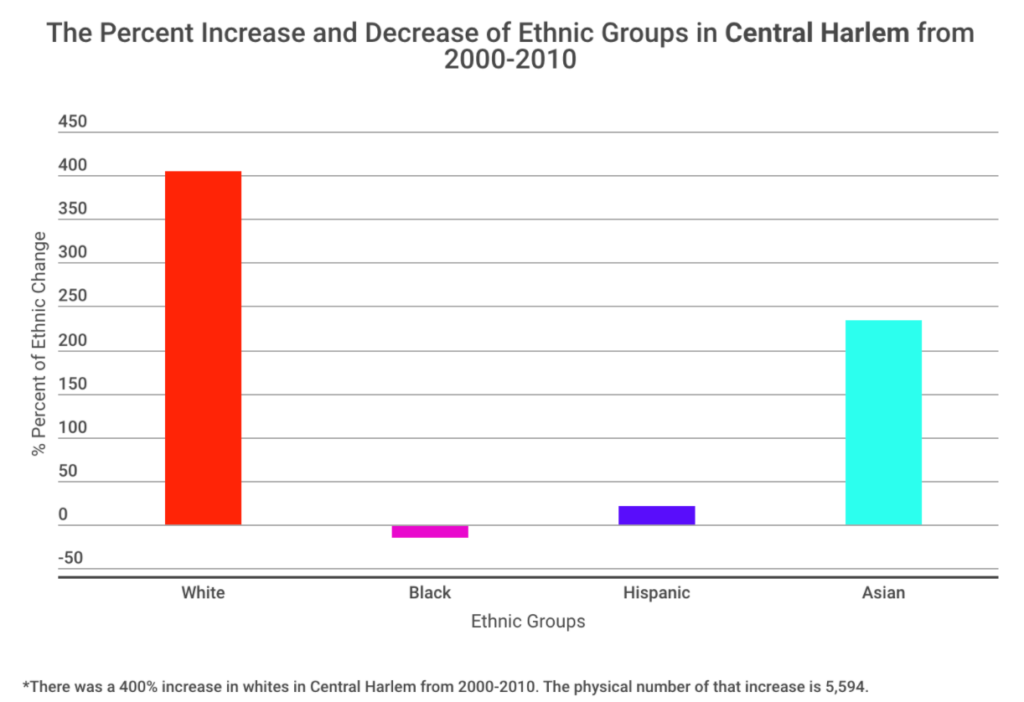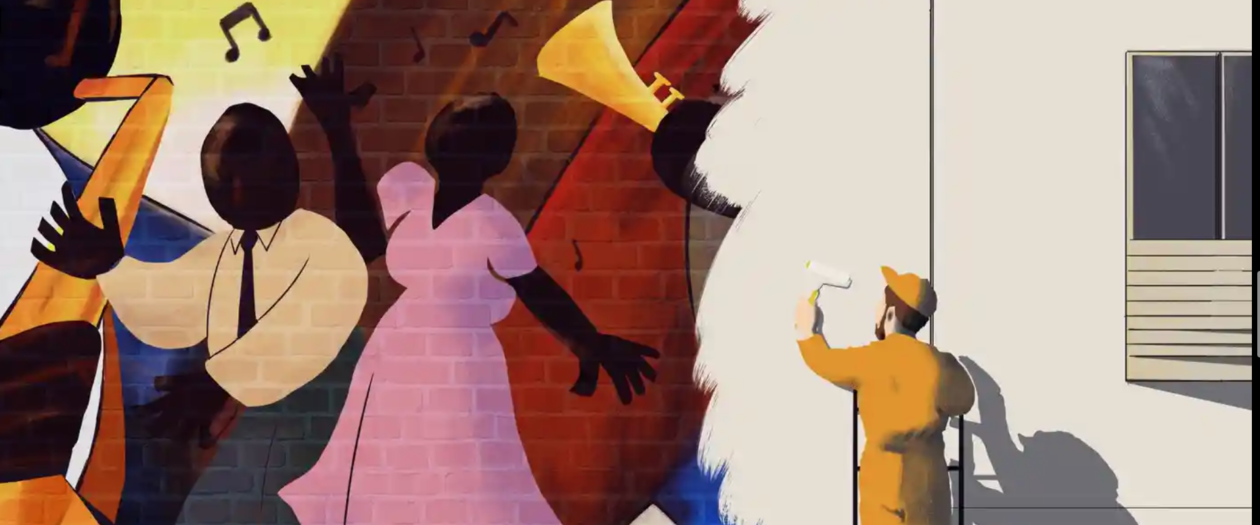
Gentrification means that demographics are changing, and Harlem is getting whiter. Between 2000 and 2010, the number of black residents fell notably, and white population share grew, particularly in central Harlem where white residents increased fivefold.
From 2000 to 2005, 32,500 blacks moved out and some 22,800 whites moved in to the Harlem district. Many argue that this displacement of blacks from the neighborhood is a result of increased housing costs.
Although it is commonly agreed upon that changes and improvements are necessary to reduce unemployment and to increase the area’s median household income, Harlemites fear that the proposed changes will not benefit them. Developers say that the rezoning will create nearly 9,000 jobs, provide hundreds of units of affordable housing and lead to more restaurants and shops in the neighborhood. However, current residents fear that along with this demographic change the street’s new face will attract wealthier people from all over Manhattan, further increasing the price of rent and eventually forcing them to leave their homes. Residents of Harlem are concerned that they will not be able to keep up with these modifications and as a result many will become homeless and unemployed. As gentrification became prominent in Harlem, the people were at a crisis.


